Giuseppe Antonio Felice Orelli, also referred to as Giovanni Antonio, (13 February 1700 or 1706- died after 1776 ) was a Swiss-Italian painter, mainly of sacred subjects, active in a late baroque style.
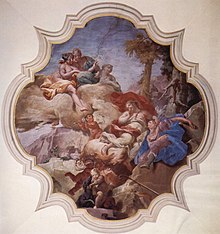
Giuseppe Antonio Felice Orelli, also referred to as Giovanni Antonio, (13 February 1700 or 1706- died after 1776 ) was a Swiss-Italian painter, mainly of sacred subjects, active in a late baroque style.

He was born in Locarno in the Ticino, but active also in Milan and Bergamo. He studied in Milan under Giovanni Battista Sassi, a pupil of Francesco Solimena. He painted for the church of San Bartolomeo in Bergamo. He is the son of the painter Baldassare Orelli. He is the father of Vicenzo Angelo, who was also a painter in Bergamo. [1] [2]

The Accademia Carrara,, officially Accademia Carrara di Belle Arti di Bergamo, is an art gallery and an academy of fine arts in Bergamo, in Lombardy in northern Italy. The art gallery was established in about 1780 by Giacomo Carrara, a Bergamasco collector or conoscitore of the arts. The academy of fine arts was added to it in 1794. The school was recognised by the Ministero dell'Istruzione, dell'Università e della Ricerca, the Italian ministry of education, in 1988. In 2023 the school merged with the Bergamo Conservatory to form the Politecnico delle Arti di Bergamo.

Fra’ Galgario, born Giuseppe Vittore Ghislandi, and also called Fra’ Vittore del Galgario, was an Italian painter, mainly active in Bergamo as a portraitist during the Rococo or late-Baroque period.

Domenico Maria Canuti was an Italian painter of the Baroque period, active mainly in Bologna and Rome. He was a major painter of fresco decorations. His ceiling decorations showed a mix of Bolognese and Roman influences.

Giovanni Gioseffo dal Sole was an Italian painter and engraver from Bologna, active in the late-Baroque period. Upon the death of Carlo Cignani, Gioseffo dal Sole became among the most prominent painters in Bologna, described as the Guido Moderno.
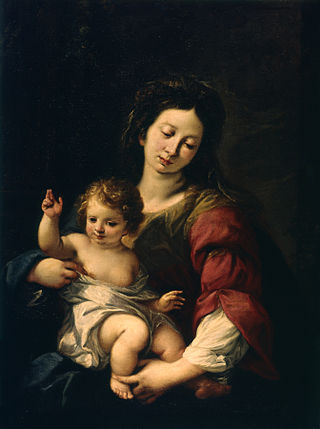
Carlo Francesco Nuvolone was an Italian painter of religious subjects and portraits who was active mainly in Lombardy. He became the leading painter in Lombardy in the mid-17th century, producing works on canvas as well as frescoes. Because his style was perceived as close to that of Guido Reni he was nicknamed il Guido della Lombardia.
Giovanni Francesco Braccioli was an Italian painter of the Baroque period, mainly active in Ferrara.

Francesco Appiani was an Italian painter of the late-Baroque period, active mainly in Rome and Perugia.

Agostino Mitelli was an Italian painter of the Baroque period and best known as a fresco painter of quadratura or illusionistic perspectival architectural frameworks.

Filippo Abbiati (1640–1715) was an Italian painter of the early-Baroque period, active in Lombardy and Turin, together with Andrea Lanzani and Stefano Maria Legnani, he was a prominent mannerist painters from the School of Lombardy. Born in Milan, he was a pupil of the painter Antonio Busca. Alessandro Magnasco was one of his pupils along with Pietro Maggi and Giuseppe Rivola. Ticozzi claims he trained, along with Federigo Bianchi, with Carlo Francesco Nuvolone. Along with Bianchi, he painted the cupola of Sant'Alessandro Martire in Milan. Abbiati also painted a St. John preaching in the Wilderness for a church in Saronno.
Carlo Biffi (1605–1675) was an Italian painter of the Baroque period. He was born in Milan, where he trained with Camillo Procaccini.
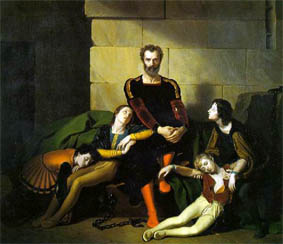
Giuseppe Diotti was an Italian painter of the Neoclassic style.

Santi Bartolomeo e Stefano is a Baroque-style, Roman Catholic church located at number 1 Largo Belotti in Bergamo in the Lombardy region of Italy. The church is associated with a Dominican convent and stands about a block away from the Teatro Donizetti.
Enrico Scuri was an Italian painter, active in a Romantic style.
Girolamo Gregori was an Italian painter, active in a late-Baroque style, mainly depicting religious and historic subjects.
Giovanni Giuseppe Cosattini was an Italian painter, mainly active in Udine, and after 1668 in the imperial court of Vienna.
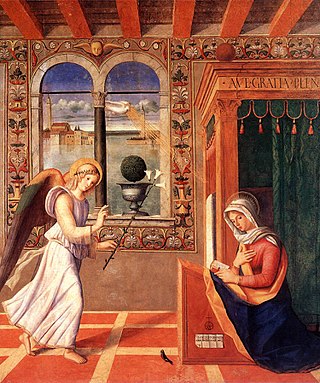
Francesco di Simone da Santacroce or Santa Croce was an Italian painter, active mainly in a Renaissance style. He was influenced by Giovanni Bellini.
The Mazzuoli family of Umbria and Tuscany, included many artists:
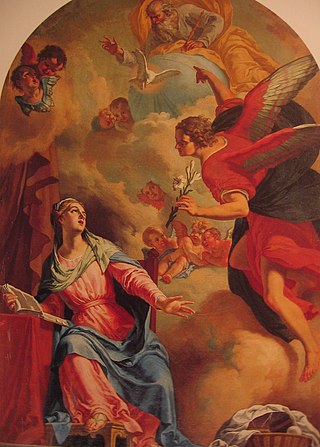
Vincenzo Angelo Orelli (1751-1813) was a Swiss-Italian painter, mainly of sacred subjects, active in a late baroque style.
Paolo Antonio Gualdo Lodrini was an Italian painter, mainly active in Bergamo as a painter of sacred subjects during the Rococo or late-Baroque period.